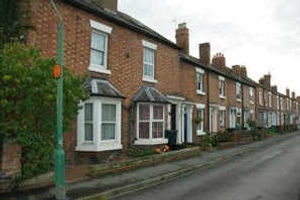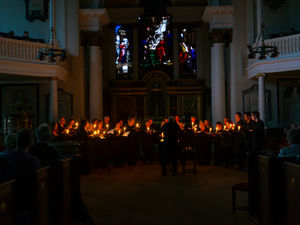Phil Gillam: Every street so full of history
Take a look down the street, any street you like. What do you see?

Houses, pavements, lamp-posts, signs, front gardens, perhaps a postbox, perhaps a telephone kiosk (almost certainly vandalised these days).
But actually that humble street is a microcosm of our world, a place where entire lives are played out, a place where - over the years - there has been great joy and great sadness, a place which has almost certainly seen both births and deaths, a place that will have witnessed both aching loneliness and the love and laughter of fun-filled family get-togethers.

I could not help but reflect on all of this when I received a letter from Mrs Pamela Bland of Hazledine Court, Longden Coleham, in response to one of my recent columns about the First World War.
Pamela mentioned in her letter a place I know well - Queen Street in Castlefields where I, as a boy, had lots of happy times hanging out with my friends, going onto the nearby play area which is still known today as The Pleasure.
But Pamela's story was not one of happy times. It told of tragedy, and the sort of tragedy that was all too common between 1914 and 1918.
Pamela writes: "After reading your pieces recently about World War I, I thought you might be interested to know that I was able to get a commemorative scroll with the name and details of my uncle on it. I got it from the Castle where I used to work. A lady interviewed people who had lost someone in World War I and I gave her a photo of my uncle and some details. This was then put in the archives at the library.
"I'm afraid I can't tell you much about my uncle except that he was Frederick Higley and died from gas poisoning on September 25, 1915, at the Battle of Loos. I think he was 17. His name is on the Menin Gate memorial in Belgium, and also on the wall in St Chad's Church.
"Uncle Fred was my mother's brother. Their mother and step-father lived in Queen Street, Castlefields. (Mr and Mrs Frederick Shaw).
"I originally lived at 32 New Park Street and moved to Dorset Farm when I was very young, with my sister and brother. Our name was Jones. My mother and I delivered the milk."
Pamela's story of a young man being killed in battle at the age of 17 is of course a story that was repeated over and over again across our nation during that terrible conflict.
Because her Uncle Fred's family had lived in Queen Street, it made me think of a very different but equally sad tale from 12 years after that young soldier's passing.
Our dad used to talk about his little sister - 'Little Gladys' was how he always referred to her. She had been born in Severn Square, Frankwell, in 1924, but our dad's father was unable to provide for her and so placed her with a family who lived in Queen Street. Gladys was knocked over and killed by a lorry on St Michael's Street in 1927. She was just three-and-a-half.
Forty years on from that, in 1967, I was in Mr Brown's old grocer's shop on the corner of Queen Street and North Street, buying potatoes to take home to Mum. Or I was going down to The Pleasure to play football or to fly my plastic model of Fireball XL5.
Eleven years on from that, in 1978, I celebrated my 21st birthday with a big party in Queen Street's All Saints Church Hall, a fantastic and joyful gathering of friends and family.
As I say: Look down the street, any street you like.
What do you see?
*You can contact Phil Gillam at philoncloudbase@gmail.com or by writing to him at the Shrewsbury Chronicle. His novel of family life, Shrewsbury Station Just After Six, is available from Pengwern Books and Waterstones in Shrewsbury.




